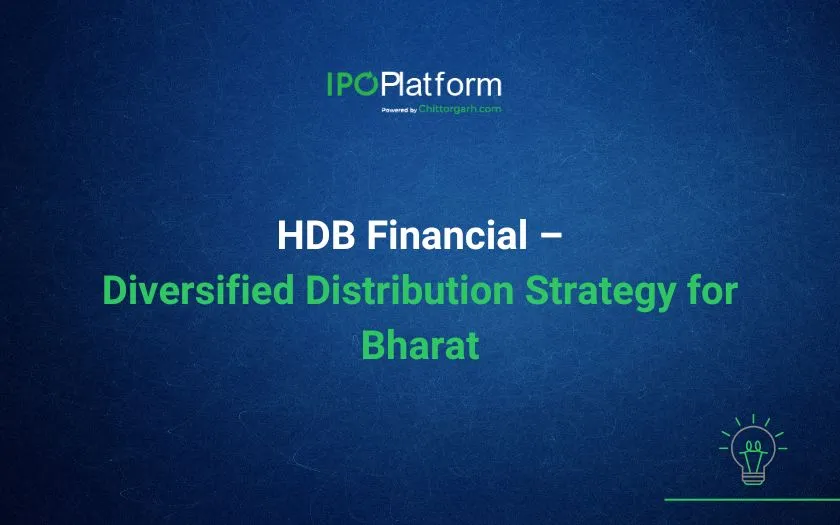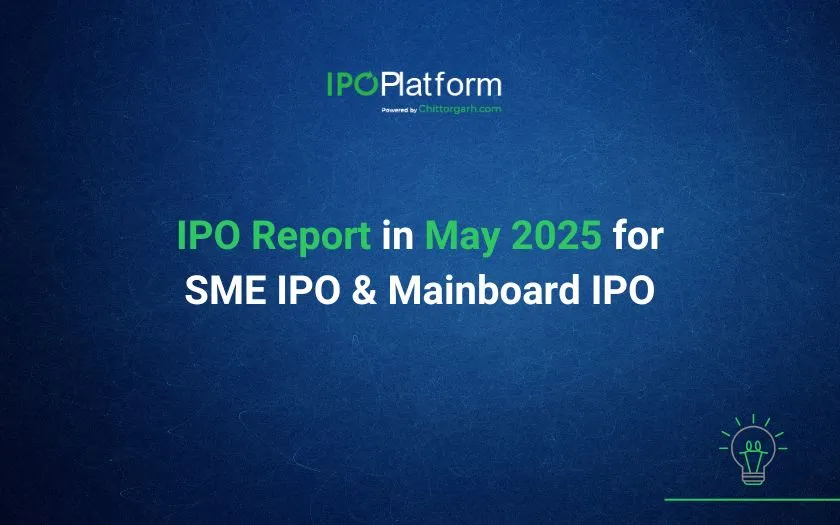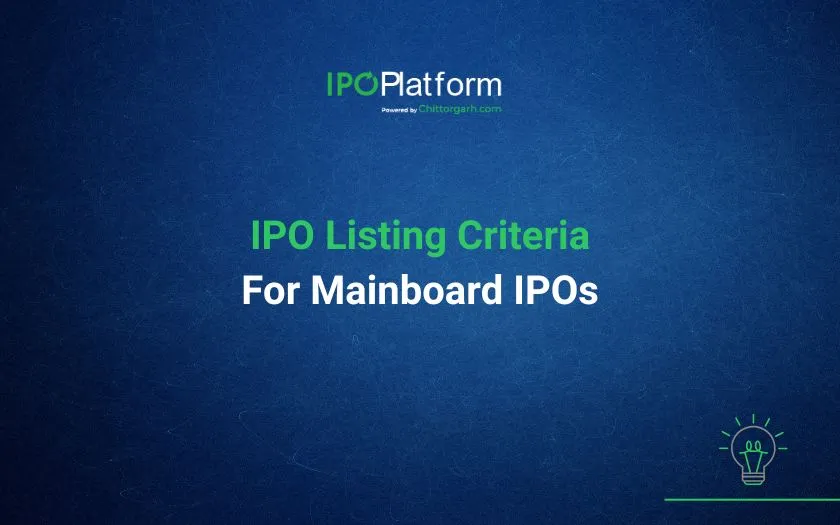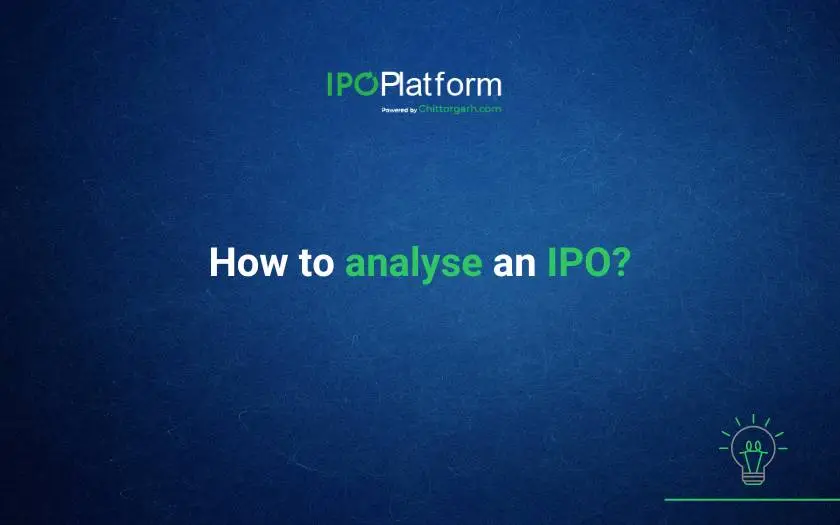HDB Financial – Diversified Distribution Strategy for Bharat

A key customer segment for HDB Financial’s strategy is the underbanked but bankable population of India, and this market segment features favourable customer characteristics and profitable economics with only a few lenders of scale operating in the same market segment.
HDB Financial created digital, customized journeys for customers across product suite. It created end-to-end customer journeys for certain products in Consumer Finance and Enterprise Lending verticals, ensuring that each step in the origination, underwriting, sanction and disbursement is entirely digital. This has enabled HDB Financial to expand customer franchise from 12.2 million customers as at March 31, 2023 to 19.2 million customers as at March 31, 2025.
According to the CRISIL Report, only 12% of India’s population borrowed money from formal sources in the 2021 calendar year. Further, while rural India accounts for 47% of GDP, it accounts for only 10% of total banking deposits and 9% of credit, as of March 2025 per the CRISIL Report.
HDB Financial’s ability to serve the underbanked is backed by its capabilities to underwrite customers with minimal or no credit history. As at March 31, 2025, 11.57% of its Total Gross Loans were to customers who are classified as “new to credit”.
Bank credit to metropolitan areas has decreased over the past few years with its share decreasing from 66% as of March 31, 2019, to 59% as of March 31, 2025. Between the same period, credit share has witnessed a marginal rise in rural (7% as of Fiscal 2019 to 9% as of Fiscal 2025) and semi-urban areas (12% as of Fiscal 2019 to 14% as of Fiscal 2025).
Rural areas, which are estimated to account for 47% of GDP, received just 9% of the overall banking credit as of March 31, 2025, which shows the vast market opportunity for banks and NBFCs to lend in these areas.
With increasing focus of government towards financial inclusion, rising financial awareness, increasing smartphone and internet penetration, CRISIL Intelligence expects delivery of credit services in rural area to increase.
Rural economy is becoming structurally far more resilient. With high focus on retail loans, NBFCs such as HDB Financial are driving financial inclusion.
Further, usage of alternative data to underwrite customers is also expected to help NBFCs such as HDB Financial to assess customers and cater to the informal sections of the society in these regions.
Overall NBFC credit during FY 2019 to FY 2025, is estimated to have witnessed a CAGR of approximately 13.2% which was majorly led by retail segment which is estimated to have witnessed a CAGR of approximately 15.4%, while NBFC non-retail credit is estimated to have witnessed a growth of approximately 11.5% during the same time period.
Share of rural areas in overall secured MSME portfolio outstanding has increased to 19% as of Fiscal 2025 (Source: CRIF Highmark, CRISIL Intelligence)
Rural regions accounted for nearly 22% share and semi-urban regions accounting for approximately 11% market share. While the fastest growth was witnessed in rural regions during the fiscals growing at a CAGR of approximately 12.9% followed by semi-urban regions which grew at a CAGR of approximately 8.9%.
Going forward, as per CRISIL Intelligence estimates, it is expected that the Unsecured Business loan segment will grow at a CAGR of 18-20% till Fiscal 2028 primarily due to rising number of business enterprises in India and increasing financial penetration in both rural and urban areas aided by multiple government initiatives in the segment. In the upcoming fiscals, as financiers are moving to more advance methods of customer underwriting and not just taking credit bureau scores in consideration, lenders would be able to lend more, significantly helping the segment to grow at a faster pace.
As of Fiscal 2025, urban and rural regions account for the highest share accounting for nearly 41% share each in overall commercial vehicle financing and semi-urban regions accounting for nearly 13% market share. Urban regions account for the highest share as of Fiscal 2025, accounting for nearly 51% share in overall Construction Equipment (CE) financing, this was followed by rural regions accounting for nearly 34% share and semi-urban regions accounting for nearly 11% market share.
Rural and semi-urban areas together account for nearly 80% of total tractor loan portfolio as of Fiscal 2025. Additionally, tractor loan portfolio grew at a highest CAGR of 15.0% in rural areas followed by 13.5% CAGR in semi-urban areas between Fiscal 2019 and Fiscal 2025.
In terms of auto loans, NBFCs have more penetration in the rural and semi-urban parts of the country. Thus, they can tap markets, which otherwise will not be accessible through banking channels.
Rural regions accounting for around 34% share and semi-urban regions accounting for around 12% market share in consumer durables. From Fiscals 2019-2025, rural regions witnessed a growth in market share of 11%, outpacing urban regions which witnessed a 5% fall in market share.
Two-wheeler volumes are expected to improve by 7-9% in Fiscal 2026 on account of recovery of rural market sales aided by healthy crop prices and incomes finally catching up with the hike in vehicle prices and pent-up replacement demand. Furthermore, the introduction of electric scooter models by OEMs is also helping drive volumes.
The two-wheeler financing segment is increasingly becoming a stronghold of NBFCs due to their greater ability to tap rural markets by offering loans at rates much lower than those of unorganised players. The limited presence of banks in rural markets also helps them.The under-penetrated rural market will be the key growth segment for NBFCs. Rising income will be further aided by better rural connectivity and rising participation of women in both urban and rural areas.
In April 2023, HDB Financial piloted a new distribution model, with the primary aim to expand its presence in rural locations with a population of 50,000 people or less, where it is already established in one or two products, and where there is expected to be significant potential to enhance its offering and product suite. HDB Financial converted 103 existing branches in 9 States into this distribution model as at March 31, 2025.
To achieve product diversification, HDB Financial is training existing FOS employees in these rural branches to drive multi-product sales in their branch radius. This serves multiple purposes including deepening penetration of our products in those geographies while also ensuring that employees are upskilled and their earning potential is increased. This in turn also contributes to higher employee loyalty and retention.
HDB Financial continuously monitors penetration levels in each product category, to identify any potential underpenetrated areas, as well as areas with high potential. It also obtain local-level sourcing data though partnerships with OEMs to supplement industry data provided by credit bureaus.
HDB Financial continues to expand pan-India omni-channel distribution network
HDB Financial established a pan-India hybrid presence, with a physical branch country-wide network of over 1,771 physical branches spread across over 1,170 Indian towns and cities located in 31 States and Union Territories as at March 31, 2025, combined with a digitally powered distribution network composed of in-house and third-party channels. In addition, we had over 80 OEM and brand partnerships and a network of over 140,000 retailers and dealer touchpoints as at March 31, 2025. HDB Financial intends to continue to grow and diversify our distribution network by opening additional new branches to expand coverage across the entirety of India while also deepening relationships with OEMs, dealers, brands, points of sales distribution and DSAs, and continuing to add more partners, with the goal of ensuring that it is present in all channels wherever existing and target customers are located.
HDB Financial established partnerships with over 80 brands and OEMs and have developed a network of over 140,000 retailers and dealer touchpoints as at March 31, 2025.As part of its distribution strategy, it has DSA network of over 7,000 agents as at March 31, 2025. It work with DSAs on a fee basis with periodic incentives aligned towards meeting certain metrics.





0 Comments